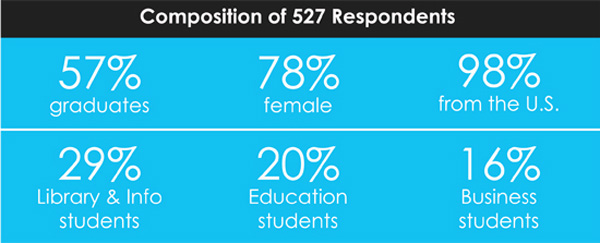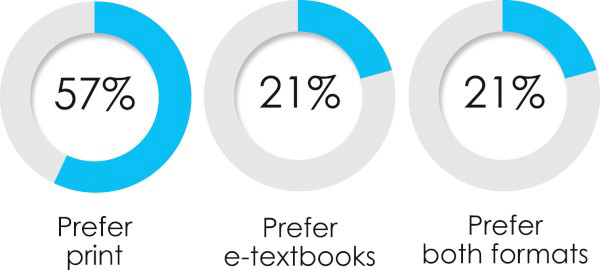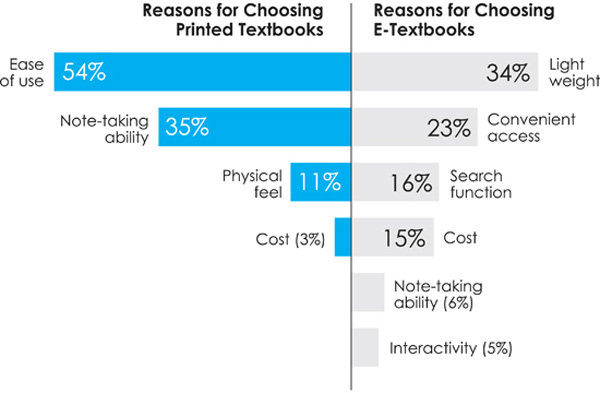
According to a news story posted on the Two Sides North America (Chicago, Ill, USA) website this week, a recent online survey conducted by Hewlett Packard revealed that 57% of college students indicated their preference for the printed version of textbooks. The article by Teri Tan originally appeared on the Publishers Weekly website this past July 8.

The 10-minute online survey conducted at San Jose State University (SJSU), California, measured student preference for e-textbooks and printed versions. A total of 527 students were involved in this survey. The composition of the respondents is shown below.

The preference for print was also much higher—at 62%—in the 18- to 35-year-old bracket, which account for 75% of the respondents. Contrary to what most would expect, the younger and supposedly tech-savvy students are not all that into e-textbooks. The survey also reveals that education and library and information science students, representing 49% of the total respondents, used printed textbooks more than other majors, including business and science.
So a 100% electronic-only publishing strategy, which is currently pursued by several major educational publishers, needs a rethink, according to the article. Incorporating print-ready and on-demand deliverables into the publishing workflow is the smart (and easy) way to increase revenues from digital-only products, it adds.
Adopting a hybrid strategy of offset and digital printing with e-book delivery covers all bases and preferences, which is easily achieved by generating and providing XML/ePUB files together with print-ready PDFs. At the same time, the push for library e-lending should not grow at the expense of print as students do not favor e-textbooks as much as most had thought, the article points out.
The survey also revealed reasons for preferring print, which ranged from "ease of use" (54%), "note-taking ability" (35%), to "physical feel of book" (11%). For those favoring the e-version, factors cited include "light weight" (34%), "convenient access" (23%), and "search function" (16%). "Cost" was cited by only 15% of the respondents as a factor in purchasing the e-version.

As for other resources or supplementary materials, 47% of the respondents preferred having a printed version of manuals, guides, and journal articles; 22% for exercises, quizzes, and assignments; and 19% for notes.
This survey, though small in sampling, clearly indicates that students still prefer ink-on-paper despite easier content accessibility and searchability via e-textbooks, or familiarity with computers, e-reading devices, or e-books. It runs counter to the push for paper-free digital classroom where e-books are often marketed (and touted) as the lower cost (and lower weight) option.
Respondents were also asked if they are willing to pay more for a printed version if they already purchased an $80 e-textbook. Results revealed that 24% of the respondents are willing to pay $10 more for the printed version while 31% are happy to pay $20 extra. Another 12% are willing to pay $40 more (at $120) for the printed version.

With students willing to pay for both e-textbook and printed versions, even if the latter costs 50% more (at $120), publishers should supplement e-courses with printed materials. One option is to provide customized textbooks or ancillaries for both on-demand and digital printing, and as downloadable pages. It minimizes inventory (and therefore upfront cash outlay and production costs) and enables rapid replenishment (at a push of a button).
TAPPI
http://www.tappi.org/